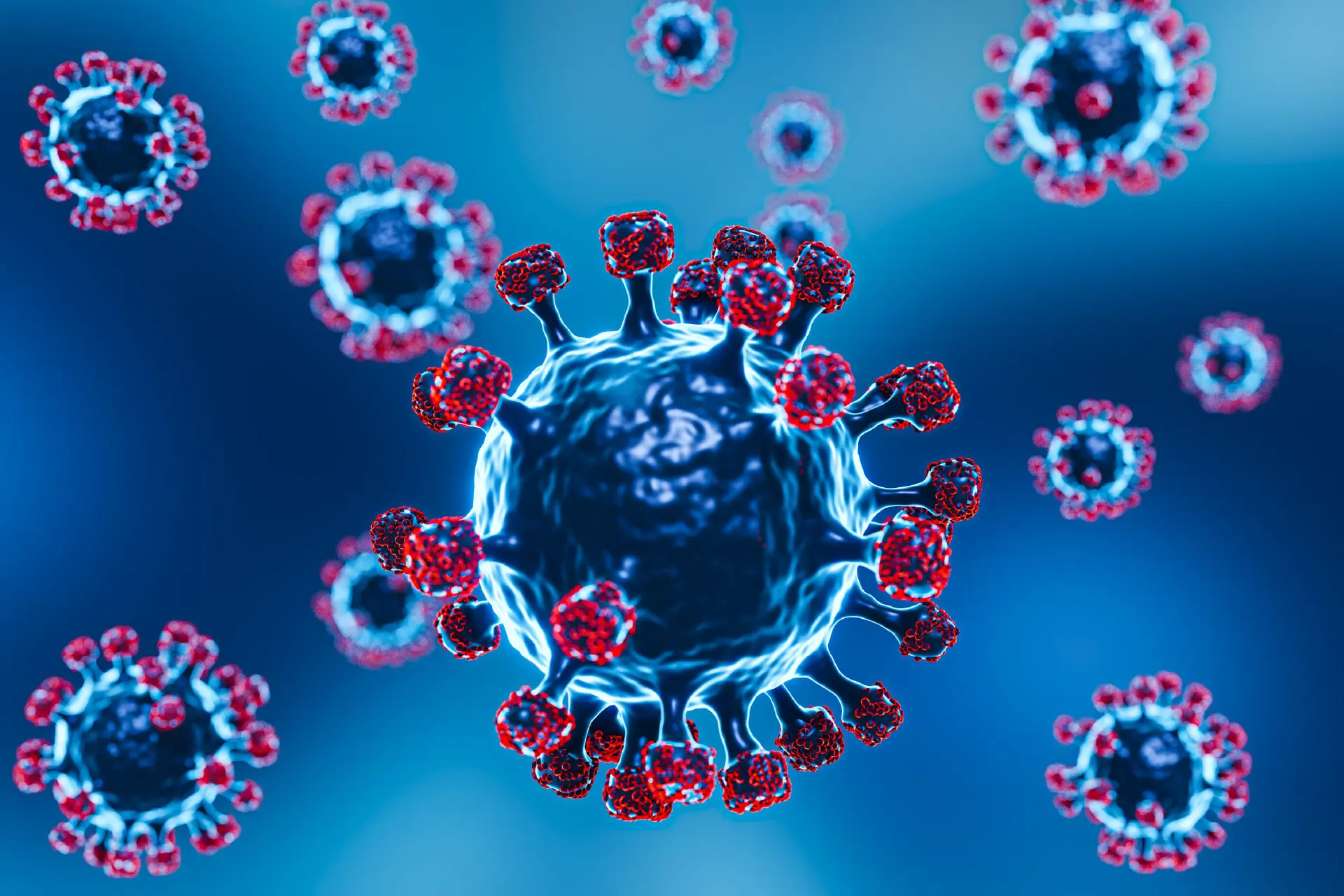Covid | 5 min read
Your Comprehensive Guide to the COVID-19 Virus
Medically reviewed by
Table of Content
Key Takeaways
- The novel coronavirus was first recognised in December 2019
- COVID-19 is structurally related to a virus that causes SARS
- COVID-19 can infect infants, children, adults and the elderly
In late 2019, the world felt the first shockwaves of the novel coronavirus SARS-CoV-2 or COVID-19. By January 2020, it was declared as a global health emergency by the World Health Organisation’s Emergency Committee mainly due to its spread across international borders. However, this did little to curb infection and by March 2020, COVID-19 was declared as a pandemic by the WHO.
As per a study, the first 425 confirmed cases of novel coronavirus were recorded in Wuhan, Hubei Province in China. Most of the infected were males, 56%, and COVID-19 symptoms in older people were found to be more severe, resulting in a high mortality rate as well. Another study conducted in January 2020 across 522 hospitals and 1,099 patients found that 1.4% of these patients died because of the virus, leading to assumptions of the fatality rate to be at 1%, or less. While this disease doesn’t have the case fatality rate of 36%, as is the case with the MERS, it does have a basic reproduction number of 2.2, which means it is very infectious.
For more information about this virus and to know the different coronavirus symptoms, risk factors, and precautionary measures, read on.
What is it?
COVID-19 is a type of coronavirus, which is identified as SARS-CoV-2. Coronaviruses are a common kind of viral infection that affect the sinuses, upper throat and the nose. There are 7 types of such viruses, and some can cause severe disease. For instance, other types can cause Middle East respiratory syndrome (MERS) or sudden acute respiratory syndrome (SARS). Coronaviruses are also responsible for causing the common cold, but this is very different from the COVID-19 cold, which can be quite problematic even for previously healthy people. Generally, these aren’t dangerous, as was the case with the SARS 2002 and 2003 outbreaks. However, in this case, COVID-19 is highly infectious and quickly spread to all corners of the world.
As a medical study published in early 2020, most of the COVID-19 patients are likely to exhibit moderate symptoms. But, as the disease progresses, the COVID-19 symptoms in order are that 15% are likely to develop severe pneumonia, and 5% will develop either septic shock, multiple organ failure or acute respiratory distress syndrome (ARDS).
How does it Spread?
Based on data reported through studies, COVID-19 has a basic reproduction number of 2.2. This means that it is very infectious and, on average, an infected person is likely to spread to 2 additional persons. Generally, it is transmitted through close contact with the infected, which is by being closer than 6 feet or 2 meters of sick persons. The virus is spread through droplets released when the infected person breathes, talks, sneezes, coughs or sings. These droplets are then inhaled, land in the mouth, eyes or nose of healthy persons, causing the infection.
Besides person-to-person transmission, there are also cases where COVID-19 is spread through the air. This is known as airborne transmission and is when droplets or aerosols remain in the air for extended periods of time. You could also get infected if you touch something that has the virus droplets present and then proceed to touch your nose, eyes or mouth.
Also Read: How does Coronavirus SpreadWhat are the COVID-19 Symptoms?
Knowing what to look for is essential to taking the right precautions, which is crucial for those dealing with COVID-19 symptoms. 2021 studies and reports suggest that there may be a new string of COVID-19 symptoms in kids and adults alike, but there is yet to be conclusive findings on the same.
However, until there’s more information, here is a list of the COVID-19 symptoms, in order of frequency, as per a study published by Frontiersin.org.
- Fever
- Cough
- Nausea
- Vomiting
- Diarrhea
With COVID-19, fever is quite characteristic and you should be alert when the body temperature is much higher than normal. As per the NHS, with COVID-19, fever temperature is anything above 37.8C. in addition to these, COVID-19 breathing problems include:
- Shortness of breath
- Loss of smell
- Runny nose
In more severe instances, as would be the case if one were to exhibit COVID-19 symptoms in old age, it is like that you could experience:
- Confusion
- Excessive drowsiness
- Blue face or blue lips
- Great difficulty breathing
- Pressure in the chest
Who is at Risk?
Anyone that comes in close contact with an infected person, without the right protective gear, is at risk of being infected with COVID-19. However, data suggest that older adults are at a greater risk of infection and further health complications. Do note that infants and children can be affected as well as it is possible to develop COVID-19 symptoms in one year old baby.
Also Read: How to keep your kids safe from Coronavisrus?What are the do's and don’ts when going for Corona virus Testing?
Dos:
- Call the doctor before going for a test
- Monitor the symptoms of COVID-19, fever duration/temperature are common examples
- Keep your immune system strong
- Self-quarantine properly
Don’ts:
- Go for a test if you don’t have the symptoms
- Touch your eyes, nose, or mouth at a testing center
- Ignore testing if you’ve been turned away due to a lack of provisions

How can you ensure safety from Infection?
Avoiding infection and preventing the spread are priorities and here’s how you can about ensuring safety from infection.
- Avoid close contact with anyone who may have symptoms or is sick
- Always maintain 6 feet from others
- Avoid any place with poor ventilation
- Wear a face mask in public
- Wash hands often and before you touch food or your face
- Use a sanitizer that contains at least 60% alcohol
- Practice good hygiene at all times
- Do not share good, glasses, bedding or any type of household items
What are the Precautions to keep in mind?
Aside from the preventive measures, here are precautionary measures suggested by the CDC.
- Disinfect any surfaces you intend to come in contact with
- Monitor health vitals daily
- Cover your coughs and sneezes
- Avoid crowded places at all costs
- Take the vaccination at the earliest
- Always wear a mask to cover your nose and mouth
Curbing the spread and staying healthy are two tasks you can achieve with this information. However, in case you do need medical attention, find the best specialist easily on Bajaj Finserv Health. Identify doctors in your area and avail care virtually, over video. Telemedicine services helps ensure you get the care you need, without any delays.
References
- https://www.nejm.org/doi/full/10.1056/NEJMoa2001316
- https://www.nejm.org/doi/full/10.1056/NEJMoa2001316
- https://www.nejm.org/doi/full/10.1056/NEJMoa2001316
- https://www.nejm.org/doi/full/10.1056/NEJMoa2001316
- https://www.nejm.org/doi/full/10.1056/NEJMoa2001316
Disclaimer
Please note that this article is solely meant for informational purposes and Bajaj Finserv Health Limited (“BFHL”) does not shoulder any responsibility of the views/advice/information expressed/given by the writer/reviewer/originator. This article should not be considered as a substitute for any medical advice, diagnosis or treatment. Always consult with your trusted physician/qualified healthcare professional to evaluate your medical condition. The above article has been reviewed by a qualified doctor and BFHL is not responsible for any damages for any information or services provided by any third party.





